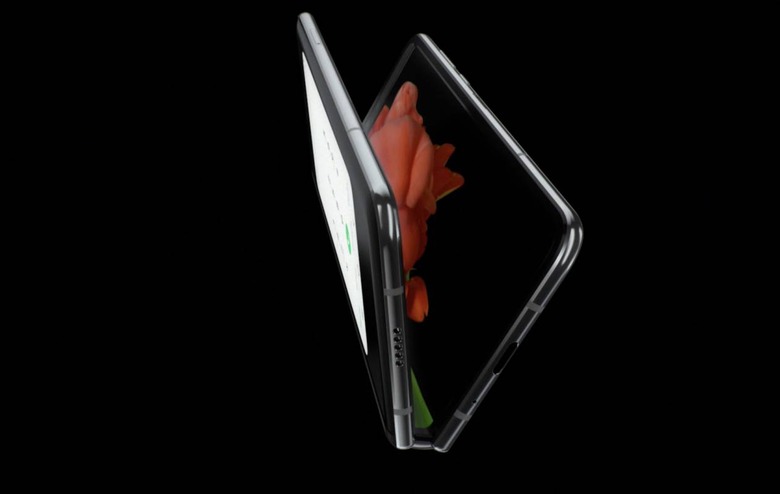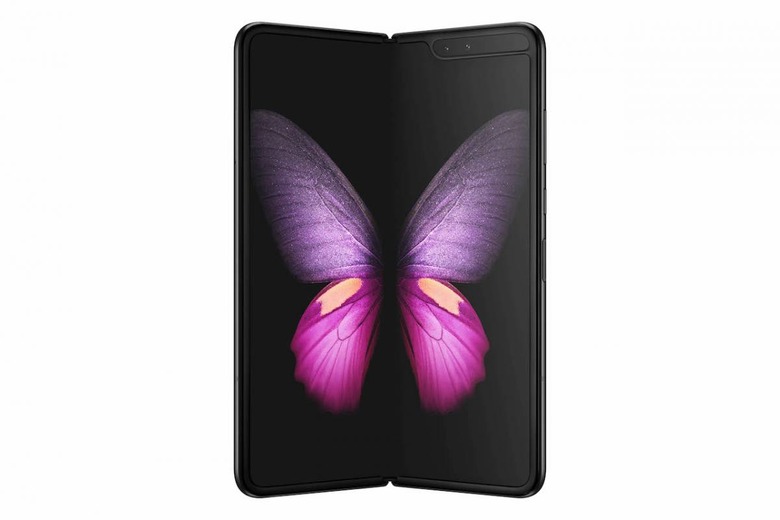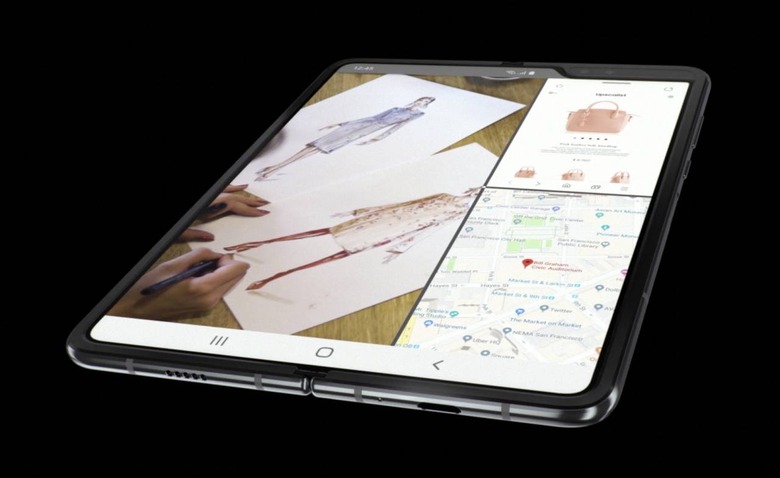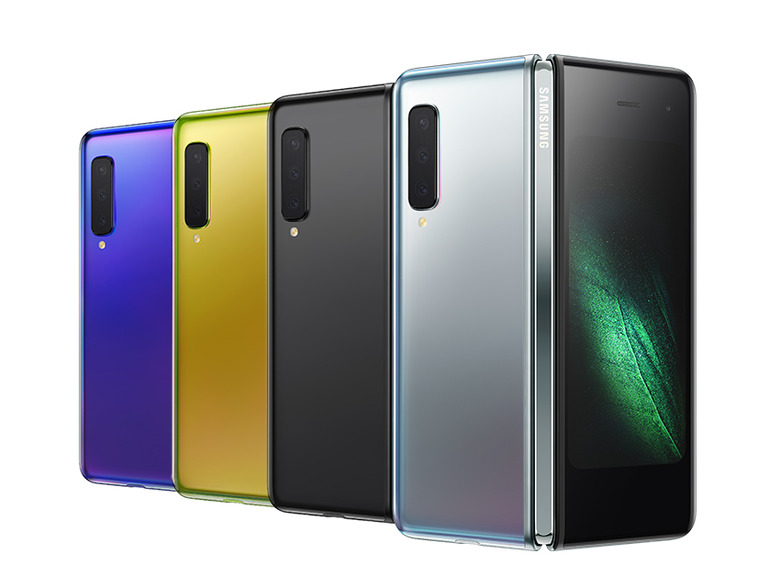It's Okay To Be Excited About The Samsung Galaxy Fold
Samsung opened its big Galaxy S10 event this week with its headline news: the flexible Galaxy Fold smartphone is not only real, it's really launching – not to mention it's also really expensive. It was a bold move by the phone-maker, one that ran the potential risk of overshadowing the more mainstream (and thankfully more affordable) Galaxy S10, S10+, and S10e.
The reaction to the foldable phone was divided from the outset. From the audible gasp – or was it a hiss? – from the collected crowd at Unpacked 2019 when Samsung confirmed its new tech showcase would cost $2,000, to the coos of geek pleasure when it transformed from closed, to open, to closed again, it seemed as though the Galaxy Fold had instantly found some teetering spot between head and heart.
You won't - and shouldn't - buy the Galaxy Fold
"The Galaxy Fold is a device unlike any that has come before it," Justin Denison, senior vice president of product marketing at Samsung, said at the opening of the keynote. Certainly, it's Samsung's most expensive Galaxy handset offered in the US so far. Denison later tried to massage the $2k sticker into context: the Galaxy Fold is a "luxury device" he explained.

Samsung isn't talking about sales expectations for the Galaxy Fold, unsurprisingly. Rumors about the clamshell device back in January suggested production numbers were going to be a fraction of the number of handsets the company would typically make of a flagship product. Indeed, just one million Galaxy Fold phones were said to be expected to roll off the line.
Given that this is a first-generation product with a seriously new – and market-untested – feature, it arguably goes without saying that most people shouldn't buy the Galaxy Fold when it goes on sale come April 26. First-generation hardware is always a risk, and an expensive risk. Manufacturers like Samsung count on those with deep pockets at the bleeding-edge of adoption to help offset development costs. Considering Samsung Display has been working on flexible OLED for years now, that sunk cost has to be considerable by this point.
Just because it's niche, doesn't mean the Galaxy Fold is irrelevant
There's been a tendency in some quarters, post-Unveiled 2019, to question why the Galaxy Fold exists at all. A device so expensive, in a segment so new – Samsung's Denison crowed that, more than defining a category, the Galaxy Fold "defies a category" – that its creation is pointless.
I'm generally cynical, but I can't help but disagree with that skepticism. Certainly, the market for Samsung's foldable will be vanishingly small. The phone/tablet hybrid is also likely to be – again, like all first-generation devices – underwhelming and flawed in some ways. Samsung's grand vision of a single handset that changes the way you interact with the world is great marketing; the reality will undoubtedly be more mundane.

Does that mean Samsung shouldn't have bothered in the first place? It would be a disappointing world if it had: one which accepted at face value the idea that the smartphone as we know it today, a glass-fronted slab of generally increasing dimensions, is the final form. The Galaxy Fold may not turn out to be the smartphone's next evolution, but that uncertainty isn't reason enough for it not to exist. Neither, I'd argue, is its price a reason to instantly discount it.
There's the chicken, and there's the egg
Expecting the Samsung Fold to be the whole, perfectly cooked omelette out of the gate is naive. Similarly, judging it on the past performance of Android tablets – which have been, for the most part, a dreary failure to live up to the expectations Google, and manufacturers, have set up for them – also misses the point. This isn't really a phone that's also a tablet, it's a phone the screen of which gets bigger.
That, I suspect, is why Samsung focused so much on multi-tasking. Putting multiple apps on-screen at once isn't something we've really expected from our phones, though Samsung, LG, and others have offered split-screen UIs on bigger handsets for some time now. Rather than showing off a magnified version of an existing app, Samsung preferred to illustrate how up to three smartphone apps could share the unfolded handset's 7.3-inch internal screen.

It's also why the early reviews of the Galaxy Fold are likely to be tentative in their conclusions. Samsung's role in this possible evolution of the smartphone isn't the entirety of the development required to make or break it. The potential branch of the device family tree requires buy-in – and polished buy-in, at that – by app-makers in order to succeed.
My guess is that Samsung's own apps will be ready and eager to support the Galaxy Fold's switch from smaller front display to larger folding panel. Google's, too, should be up to the challenge. Third-party developers will have to decide if it's a bet worth assigning resources to.
That assessment of worth didn't seem to come out in tablets' favor, looking back at the underwhelming selection of Android software tailored for bigger displays. The difference here is that this new species of shape-shifting apps have core Android in their corner. Google showed off its vision for the foldable phone UI last November, promising that it would be an instrumental part of the OS.
Certainly there's no guarantee that, just because Google itself is behind it, foldable devices are going to be a hit. Even when second, third, and later generation hardware arrives – which has to be Samsung's end-goal, not to mention that of its competitors also working on the form-factor – consumers and developers could decide they're just not swayed by it. Google, after all, was equally vocal about Android tablet app development, but that has hardly been a grand success in the long run.
Gadgets are a good thing
There's rational assessment of a potential new category, and there's gut reaction. Amid the jumble of Galaxy S10 variants, upcoming S10 5G, wearables, and accessories, it's easy to lose track of the fact that the Galaxy Fold is something that, only a few years ago, was the stuff of science-fiction movie CGI. A display that can be folded without cracking or splitting: a device that fits into your pocket, but which unfurls into something that seems like more than the sum of its parts.
Part of my enthusiasm for the Galaxy Fold, then, is this recognition that in many ways it's the sci-fi dream unexpectedly made real. I don't see that wide-eyed eagerness for technology as being a bad thing, necessarily. Though skepticism undoubtedly has a role to play when it comes to making purchasing decisions, experimentation is just as valid.

Had Samsung said that the Galaxy Fold was the new Galaxy S10, that it would be making a single device with a brand-new, untested form factor, and that the price of entry would be two thousand dollars, I'd be first in line to suggest the company had collectively lost the plot. It didn't.
Instead, it opened its show with a device that's more about previewing a vision of the future – and of the hardware that Samsung's other divisions are busy working on to enable that future, both for the company itself and for its other customers – than a single product. Will tomorrow's flagship smartphones look like the Galaxy Fold? Maybe not, but it's just as much in Samsung's interests to publicize how ahead of the curve its display division's flexible OLED is. Perhaps even more so.
Credit where credit is due
The Galaxy Fold was always going to have a painfully high price tag. After all, when a Galaxy S10+ with 1TB of storage and 12GB of memory comes in at $1,600, a premium for twin screens where one of them can physically fold in half was an inevitability. No, what was more surprising to me and many of the people I spoke to after Unpacked 2019 was that the Galaxy Fold had a price at all.
The general expectation had been that Samsung would wave a shiny looking device around, talk up its OLED prowess, and then focus on shipping the Galaxy S10 range. Instead, it gave us not only a price but a release date. No, you may not be especially happy about that price – I know I'd have preferred it to be more affordable for my wallet – but the fact that Samsung is committing to both deserves some kudos nonetheless.
The future of smartphones may or may not be foldable. Time, consumers, and developers will decide that. But it's okay to still get excited about the Galaxy Fold nonetheless, even if you have no intention of buying it.
